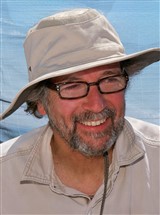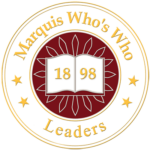 Occupation: Associate Wildlife Ecologist and Bat Biologist
Occupation: Associate Wildlife Ecologist and Bat Biologist
Company: H. T. Harvey & Associates
Education:
PhD in Biology, York University (1997)
MS in Ecology and Evolutionary Biology, San Jose State University
BS in Biology, California Polytechnic State University
Career:
Associate Wildlife Ecologist and Bat Biologist, H. T. Harvey & Associates (1997-Present)
Lecturer, Santa Clara University (2002-2004)
Adjunct Professor, San Jose State University (1990s)
Executive Director, Youth Science Institute (1979-1995)
Civic:
Host, North American Society for Bat Research Conference (2015); Chair, Library Committee for Villa Montalvo, Montalvo Arts Center
Creative Works:
Co-author, “Bat Foraging Response to Introduced Fish in the Sierra Nevada” (2021); Co-author, “Final Caltrans Bat Mitigation: A Guide to Developing Feasible and Effective Solutions” (2019); Co-author, “Resource Ephemerality Drives Social Foraging in Bats” (2018); Co-author, “Sustainability of utility-scale solar energy-critical ecological concepts” (2017); Co-author, “Searcher efficiency and survey coverage affect precision of fatality estimates,” Influence of Searcher Efficiency (2016); Co-author, “Winter and Summer Torpor in a Free-Ranging Subtropical Desert Bat: The Fishing Myotis (Myotis vivesi)” (2014); Co-author, “Protocols to implement an avian and bat protection plan and to monitor bird and bat fatalities at large solar photovoltaic power projects” (2014); Co-author, “The response of an insectivorous bat community to solar development” (2014); Co-author, “Bird and Bat Movement Patterns and Mortality at the Montezuma Hills Wind Resource Area” (2013)
Achievements:
Has worked on high-profile commercial projects, including a notable assignment for Richard Branson, where he assisted with the siting of wind and solar energy on Necker Island; Served as the president of the Santa Clara Valley Audubon Society, which had over 5,000 members. Under his leadership, the organization contributed $10,000 annually to oppose the Los Angeles Department of Water and Power’s diversion of tributaries that feed Mono Lake. This effort, supported by several other non-profits, ultimately succeeded in protecting the lake. Dr. Johnston was deeply involved in such environmental advocacy during his earlier years, particularly in 1980.
Awards:
Recipient, Grant for a Three-Dimensional Thermal Camera to Observe Bats, National Science Foundation, H. T. Harvey & Associates; Honoree, Who’s Who Young American Professionals; Grantee, Institute of Museum Services, Youth Science Institute; Two-Time Honoree, Outstanding Executive Director, Youth Science Institute
Memberships:
Member, American Society of Mammalogists; Member, North American Society for Bat Research; Member, The Western Section of The Wildlife Society; Science Communication Committee Chair, Global Union of Bat Diversity Networks (GBatNet); Board Member, Western Bat Working Group; Former President, Santa Clara Valley Audubon Society
